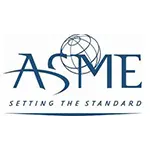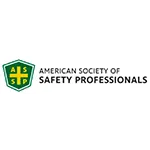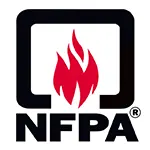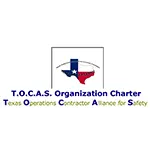CLICK HERE to Renew your Membership
CLICK HERE for a NEW Membership
CLICK HERE to see eligibility requirements for FREE Membership
If you have any questions, please contact me
We offer:
- Over 17,600 categorized unsafe acts/conditions and accident/injury photos
- Over 1,450 ppt's & doc's
- Over 3,975 technical articles on Process Safety & Occupational Safety & Health matters
- Over 450 videos
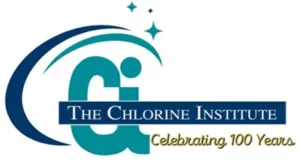
I am proud to announce that have extended our”Partners in Safety” agreement for another year (2025).
CI Members, send me an e-mail to request your FREE SAFTENG membership.
Many THANKS to my NEW Members and those who CONTINUE to support SAFTENG:





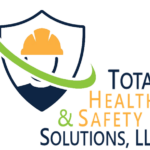








December 25, 2012
It is not uncommon for flying objects to be the of cause eye injuries at the workplace. In some workplace settings, such as construction and manufacturing, the occurrence of flying objects is more prevalent than with other settings. Even so, flying objects pose a real threat to all workers and precautions must be taken particularly when working in high-risk areas. Flying objects present...
Read More
December 25, 2012
When you get into your car, truck or van, do you buckle up? If not, it may be because you’ve been led astray by common misinformation about seatbelts? Here are the answers to some of the questions that people most often ask about seat belts: What difference will a seat belt make in a serious crash? It could spell the difference between life and death. Your chances of surviving a serious...
Read More
December 25, 2012
At a department meeting, the Manager was addressing his concern regarding the blatant disregard of departmental policies and numerous on going safety-related infractions by many of its members. The list was quite long and each item cumulated in what the Manager described as ignorance and/or apathy. He concluded that eventually someone was going to be injured as a result of the prevailing...
Read More
December 25, 2012
Hand crushing injuries are common when rigging and handling equipment. “While operating the 15 Ton Galion Mobile Crane to remove and lower pipes from ‘F’ Decanter, Crane Operator tried to use his hand to prevent swinging pipe from hitting against cab of crane. This resulted in the pipe crushing the first joint of his right middle finger against the cab of the crane.” ADOPT DEFENSIVE BEHAVIOUR...
Read More
December 25, 2012
The human eye is provided with more protection than any other part of the body. However, its own protection is not enough. Workers can still get particles of dust, metal, wood, glass, concrete, plastic or other hard substance in their eyes. Chemicals, acids, sparks, hot oil, fire and steam are also eye hazards. But natural elements can also be harmful to our eyes. Our eyes are constantly attacked by...
Read More
December 25, 2012
Have you ever made a decision to break a safety rule? How long did it take for you to reach that decision? What did you gain by taking a chance? It only takes a moment to decide to break a safety rule, yet that one moment could change your life forever. Do you always work safely? Are you 100% committed to the safety of yourself, your co-workers, friends, and family? Are there times when your commitment...
Read More
December 25, 2012
One key to avoiding injuries from falls is learning to recognize and control slip and trip hazards. Like many aspects of workplace safety, your attitude and awareness play a large part. When traveling through the workplace, keep a sharp lookout for any obstacle that may lead to a slip or trip. This includes open file drawers, potholes, extension cords, air hoses, tool boxes or other...
Read More
December 25, 2012
Caught-in hazards cause only minor injuries and are not a big concern to construction workers. True False A caught-in hazard can be described as: Not wearing a seatbelt while driving a forklift Being hit by a swinging load from a crane Anytime a worker can get any part of his body caught in or in between objects Working in a trench box Never walk inside the swing radius of a crane or excavator because:...
Read More
December 25, 2012
Safety is largely about actions. But it’s also about attitude. We can observe actions objectively. But it’s harder to see into employees’ heads and hearts and examine their attitude toward workplace safety. Every employee must be dead serious about safety—or they could end up dead. As well as taking job safety seriously, a positive attitude is reflected by other...
Read More
December 25, 2012
Accountability – Responsibility for our actions that influence the lives of our customers and fellow workers. Creating a safe work environment, like any other organization-wide initiative, can only be assured when everyone in every job takes ownership and accountability for making the workplace safe. Balance – Maintaining Healthy life and work balance. When our work life and personal...
Read More
December 25, 2012
EXTERNAL FATAL INCIDENT- FATALITY WHILE INFLATING TRUCK TYRE An operator was inflating a front tyre on a truck when the lock ring on the front wheel flew off hitting the operator in the face. The operator was rushed to hospital, where he died. Basic causes included: Operator was positioned directly in front of tyre. Tyre pressure not checked prior to inflation. TYRE BLOW OUT IN CAT 789The front...
Read More
December 25, 2012
It is important to establish a safe work zone around every job. Each time we step into certain work areas, we are exposed to nearby hazards. These may include high voltage, high-pressure air, rotating machinery, flammable liquids, chemicals, explosive gases and energized equipment. In addition to these potentially deadly hazards, we are also subjected to many perils, which, while...
Read More











